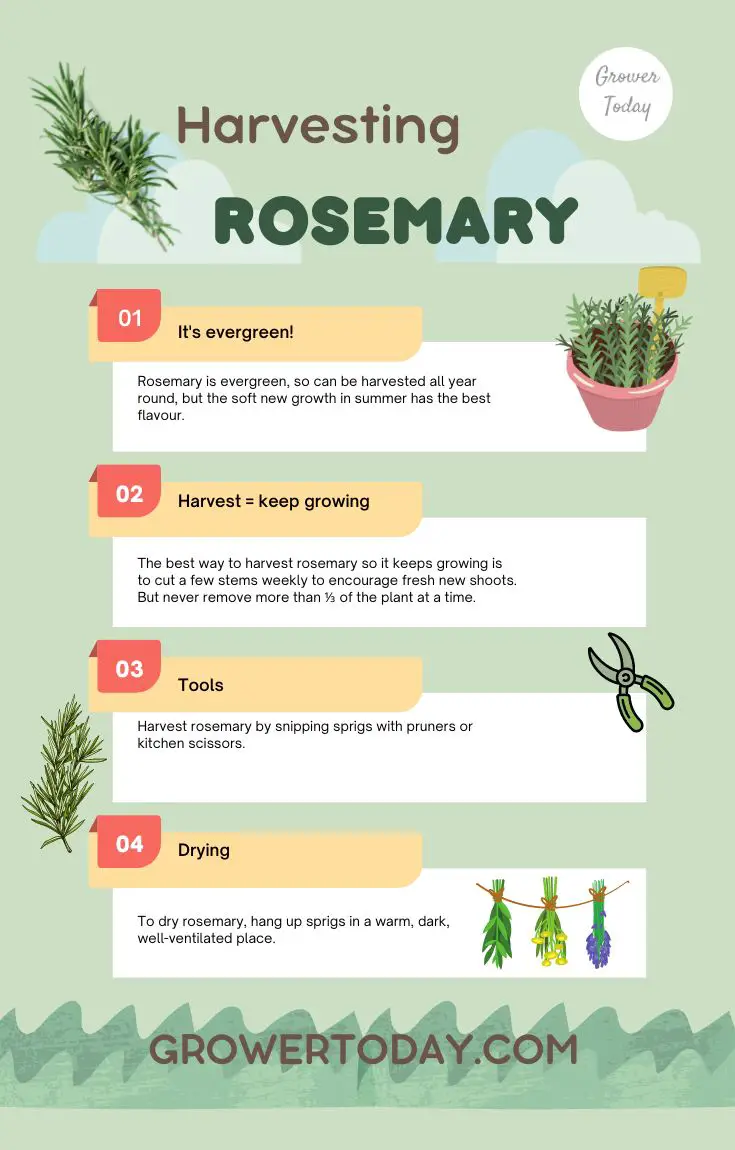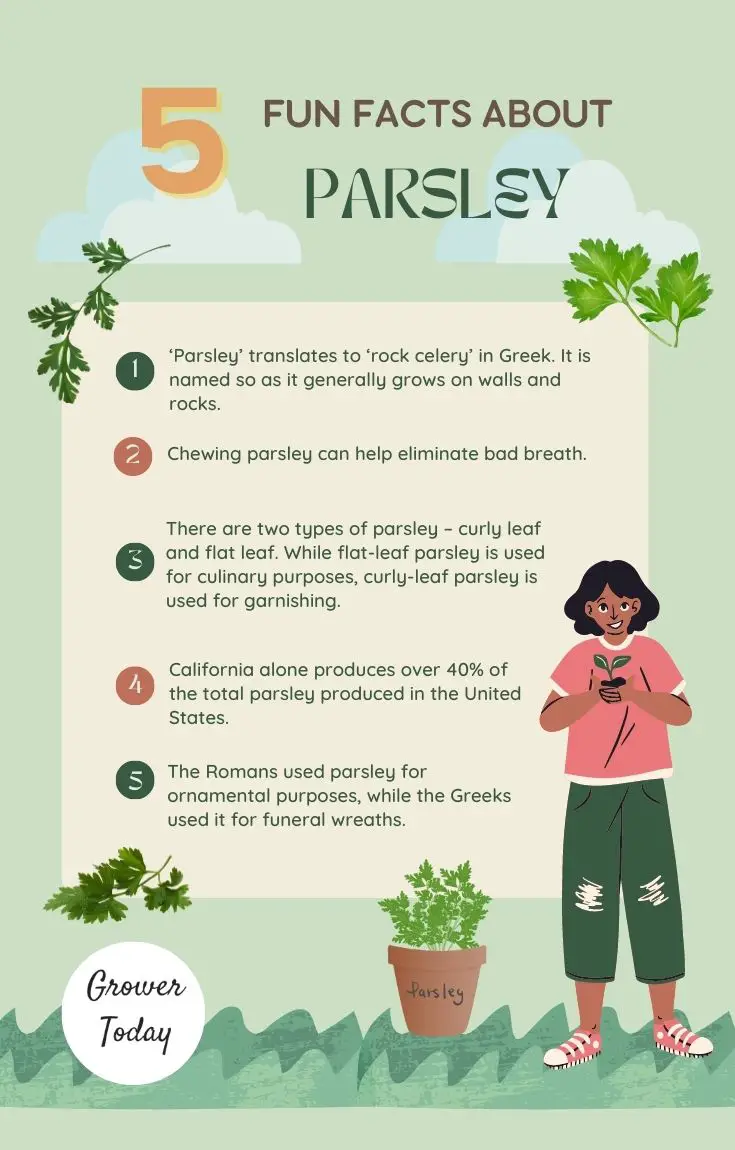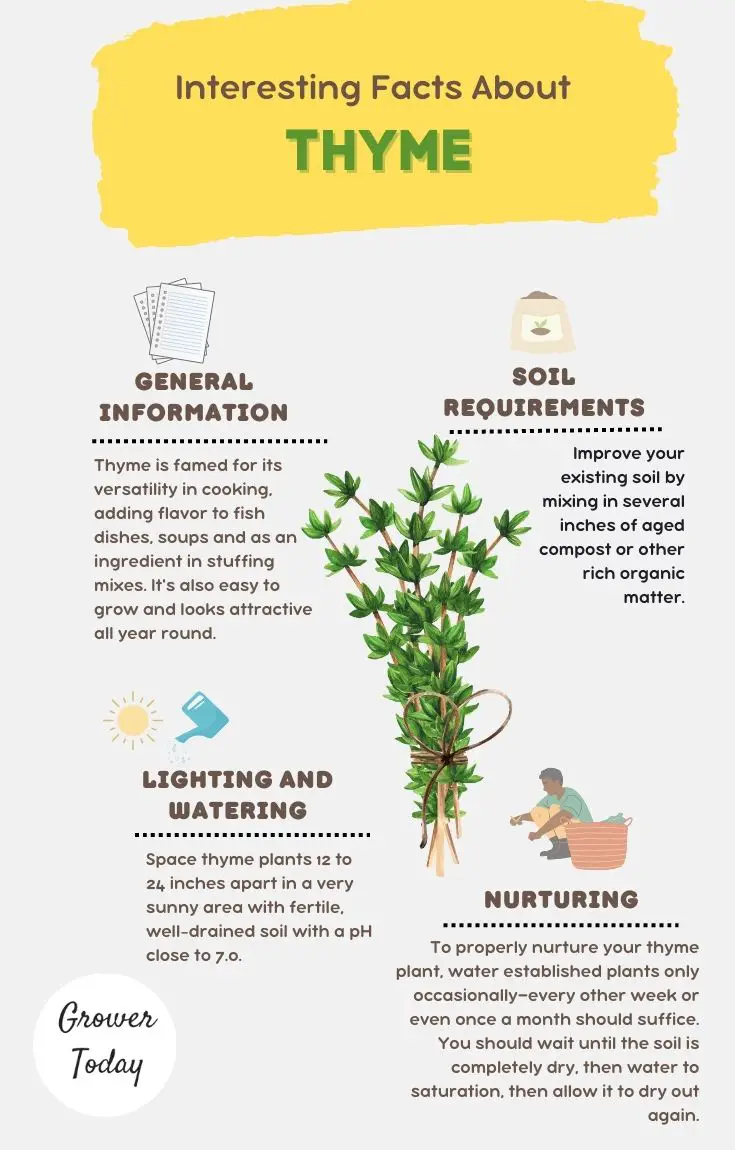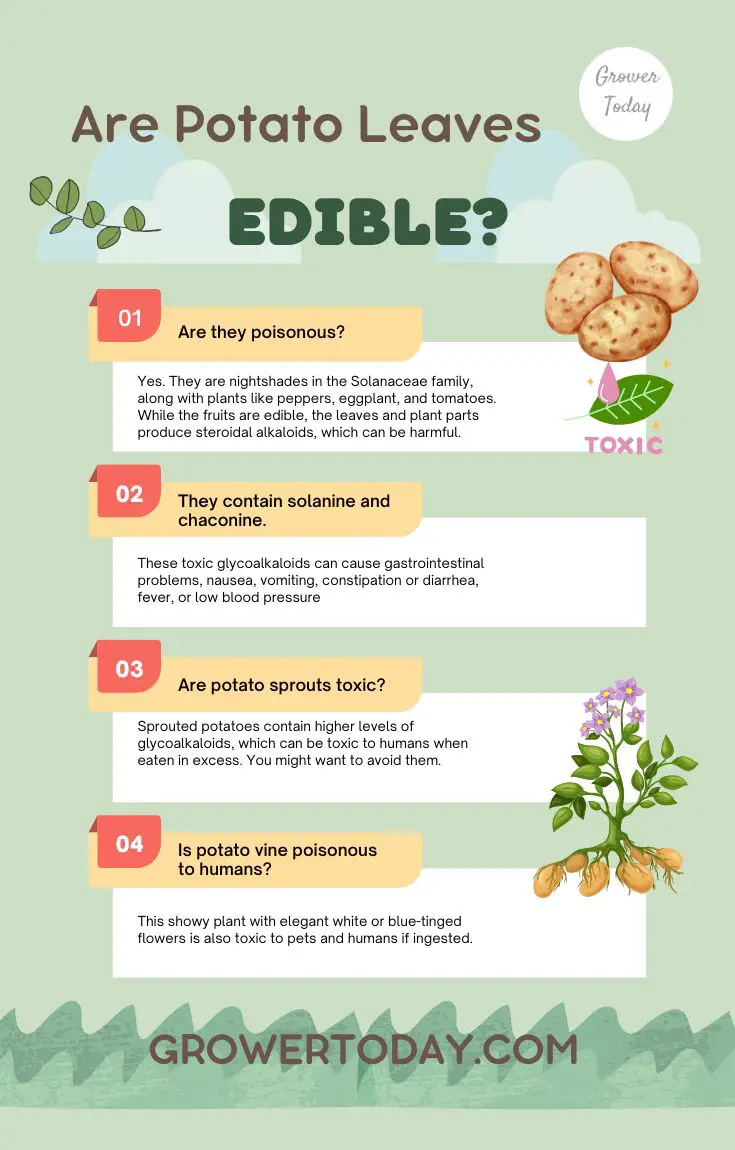The smell and taste of freshly harvested rosemary from the garden have got to be the most refreshing things you can experience. While the process of harvesting is very simple and easy, it is important to know when & how to harvest rosemary the right way so that your plant keeps producing for you to have a long and continuous harvest.
Rosemary is a cut-and-come-again type of crop, meaning the more of it you pick, the more you will be able to harvest. This is provided you do it properly. If you want to learn how to harvest rosemary properly, and get tips on what to do with it afterward, keep reading.
The Rosemary Plant
Rosemary (Salvia rosmarinus) is a perennial herb that can be grown in so many different climates all year round even if they are flowering, as long as the environmental conditions are right.
The rosemary plant is a shrub with fragrant, evergreen, needle-shaped leaves. It can also have white, pink, purple, or blue flowers depending on where it is in its growth cycle. It is native to the Mediterranean region and will survive the winter in warmer climates.
Rosemary however very sensitive to extremely cold conditions such as freezing temperatures. If you have this kind of weather approaching, you might need to harvest all your rosemary before the cold kills it. Either pull the entire plant from the soil or gather the leaves and young stems. You can also just cut the plant all the way back.
If you have plants that are sure to withstand the winter cold, or you live in a place with a warm climate, having one or two will usually be enough for you to use throughout the summer and still have enough to store for use through the fall and winter months.
Rosemary is a herb that makes a great companion for many vegetable dishes such as cabbage, broccoli, and carrots. If you fancy growing and enjoying this herb, learn how to harvest rosemary without killing the plant.
How to Harvest Rosemary Without Killing the Plant
Rosemary has two parts of the plant that you can harvest, these are the new tips or sprigs, and the leave. Both parts of the plant are edible.
Most of the flavor and aromatic oils of rosemary are found in the leaves of the plant. This makes them ideal for use in cooking, making tea, and many other uses. The tender tips of the stems are the best ones to use for cooking. The older ones tend to get woody and tough and are best used to infuse flavors rather than eating.
If your rosemary plant is newly planted, you will need to have to wait until it has grown a bit of length and start to bush out before you start harvesting it.
Step-by-step guide
Step 1: Harvest the plant at the right time
The best time to harvest rosemary is in the spring and summer when the plant is actively growing. Avoid harvesting it in the winter season, when it is dormant.
Step 2: Harvets new shots that are at least 8 inches long
New shoots are best for cooking as they have a lot of flavors and are tender. Shoots that are still too young need to be given time to grow so that you can have a continuous harvest.
Step 3: Cut 3/4 of the plant stems at the maximum
Never harvest all the stems of your plant at any one time. Leaving the plant with some stems will allow it to regenerate.
Step 4: Leave at least a quarter of the branch intact with as many leaves as possible
Leaving branches with some leaves will help your plant to keep producing.
Step 5: Water the plant thoroughly
While harvesting your rosemary, make sure that you keep watering it so that it can continue to put out new shoots.
Step 6: Give the plant some fertilizer
Giving fertilizer to the plant will help it to recover after it gets harvested.
Step 7: Monitor your plant for any spots or signs of unusual development or stress
Keeping a careful eye on your plant will help you to quickly notice any unusual signs on your plant so you can remedy what you can to keep your plant healthy.
How to Cut Rosemary From Plant
Most gardeners cut off full sprigs, and then strip off the leaves depending on the intended use. To strip off the leaves, simply run your fingers along the length of the stem from top to bottom. You can also just pinch them off with your fingers.
Instead of cutting off full sprigs of rosemary, you can also just take individual needles from the plant as needed.
However, you choose to harvest rosemary, always cut the tender, new tips or stems. The best ones to harvest are those that are 8 inches or longer. Identify those and cut off the top 2-3 inches with sharp pruning shears.
How often you harvest your rosemary will depend on a few factors. These factors include the age or size of your plant and how much you harvest at a time.
If you are cutting a few sprigs here and there, you can harvest as often as you like with no fear of overharvesting your plant. If you take a large harvest at a time, about 1/3 of the plant’s total size at any one time, the plant will definitely need more time to recover.
Always use sharp pruners or kitchen scissors to cut off the stems instead of pulling or tugging on the branches. And be careful not to harvest too much at a time or your plant may not be able to recover.
Only pick the healthy stems that have green leaves. If you notice any yellowing, browning, or dry needles, do not harvest them as they may not taste good. You can however cut them off and give the plant a chance to grow healthy foliage.
Regularly trim the plant even if you do not harvest for use. Doing this every two weeks will help to encourage new plant growth. You can freeze some of your trimmed-off rosemary for long-term storage in an airtight container or ziploc bag.
When to Harvest Rosemary
The best time to pick rosemary is in the spring and summer when the plant is actively putting on new growth. It is best to pick the sprigs in the morning after the dew has evaporated before the afternoon heat has set in.
As soon as your plant is established and is putting out new growth, you can harvest it during these time periods. Look out for supple green stems emerging from the already existing branches to know when the plant is ready for harvest.
Are Rosemary Flowers Edible?
Rosemary buds are tiny flowers that appear when the rosemary plant is in bloom. These flowers are edible and can be used for many different things.
They have a slightly sweeter flavor than the leaves. They are perfect for garnishing various dishes and adding colors to salads. They have a similar flavor and aroma to the leaves and stems, only taste a bit sweeter.
What to Do With Freshly Harvested Rosemary
Refrigeration
Freshly picked rosemary can be enjoyed right away but chopping it up and adding it to soups, stews, sauces, or even roasts, or infused into other foods. Any leftovers can be safely stored in a small glass or vase and kept in the fridge for use within a few days. If it is whole sprigs, keep the ends submerged in clean water and they can last for up to two weeks.
Refrigeration is a good short-term storage solution and will keep rosemary fresh for about 2-3 weeks. There is no need to wash the sprigs for refrigeration, it might actually help them store longer. Simply clean them with a damp towel. Place your cleaned sprigs in a container and store them in the crisp drawer of the refrigerator.
Freezing
If you want to store your rosemary for longer, you can freeze it. These silicone ice cube trays are great and easy to use to turn rosemary into ice cubes and store them in an airtight container or ziploc bag so they do not get any off flavors.
Drying
Another long-term storage option for rosemary is drying it. Unlike other herbs such as parsley and basil, rosemary does not lose its flavor when dried.
Using a food dehydrator is one quick way of drying the herb. You can dry whole sprigs using a low setting that is suitable for herbs. If you do not own a food dehydrator, use the traditional method of air drying.
For drying, it is best to harvest stems of about 6-8 inches, but any length will do. Hang them up in bunches in a dark, dry, and warm place, or lay them flat on wire racks, and make sure you do not tack them in layers as this may delay drying or even make them rot. Place a tray under the drying herbs so it will help to catch any bits that fall off as the herbs dry.
Keep in mind that dry rosemary is much harder and woody than when it is soft. You can crush or grind the dried leaves to make them easier to cook with, but they retain flavor better if they are kept whole.
How Long is Rosemary Good For?
This fragrant, vigorous, and evergreen herb can be harvested all year round, although the best time to harvest it is in the summer and spring, just before it flowers and when the aromatic oils are at their best and the plant essence is best preserved.
If you take good care of your plant, it will keep producing healthy, and if you harvest it the right way might keep it around for about 15 years or more.
Once harvested, you have multiple options on how to store it:
- Refrigerating for up to three weeks
- Freezing for up to six months
- Drying for as long as you desire
If you do any of these the right way, your rosemary will stay good.
Tips to Improve Your Rosemary Harvest
- Rosemary is a relatively drought-tolerant plant, but you must water it regularly if it is in a spot or pot that does not get a lot of rain. This will surely keep your rosemary harvest good. The plant also hates getting too wet, so make sure you grow it in well-draining soil to avoid any water-logged conditions that may kill the plant.
- If you are in a colder zone, plant your rosemary in containers so that you can bring them in during the cold winter months.
- If your previously healthy plants are getting less vigorous over the growing seasons, take cuttings from them and grow new plants to replace them. They may be losing vigor due to age.
Quick Summary: How to Harvest Rosemary
Knowing and using the right method of harvesting rosemary is key to maintaining the productivity and vigor of your plant, and will determine how long your plant will last. If you want only a little bit to prepare a dish, you can simply just pluck individual needles directly from the plant as needed.
Most gardeners snip off full sprigs and then strip the leaves when they harvest rosemary. This way they only get what they need and leave the plant to keep growing.
Harvest rosemary by snipping sprigs with pruners or kitchen scissors, and avoid any pulling which may damage the plant. Harvest the new growth on the plant to get the best flavor for cooking. New growth will be flexible and lighter green while older growth will be woodier and darker.
We hope you found this article informative and that you will now confidently grow and harvest your rosemary the right way.
Happy growing!








